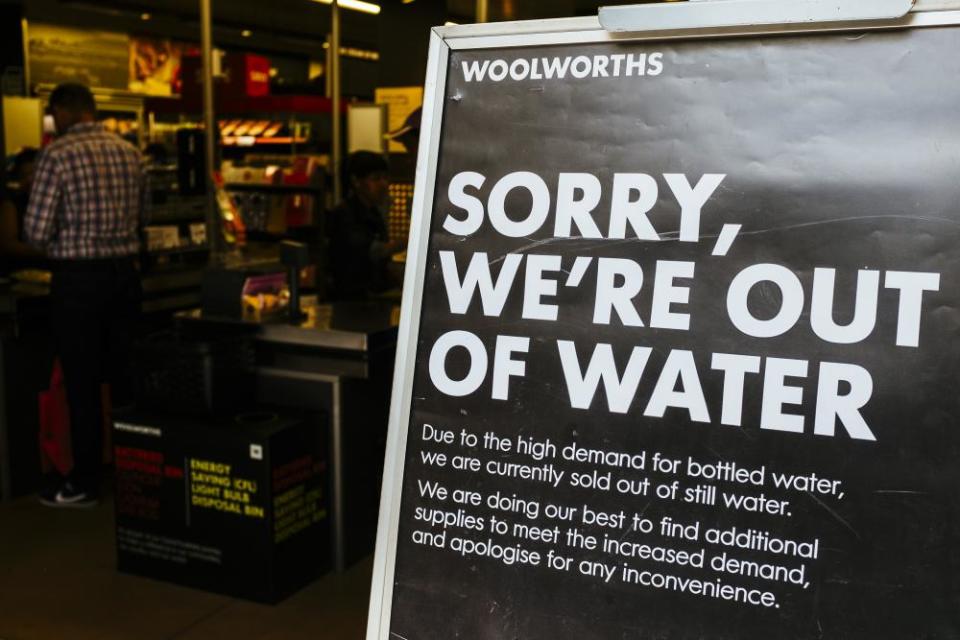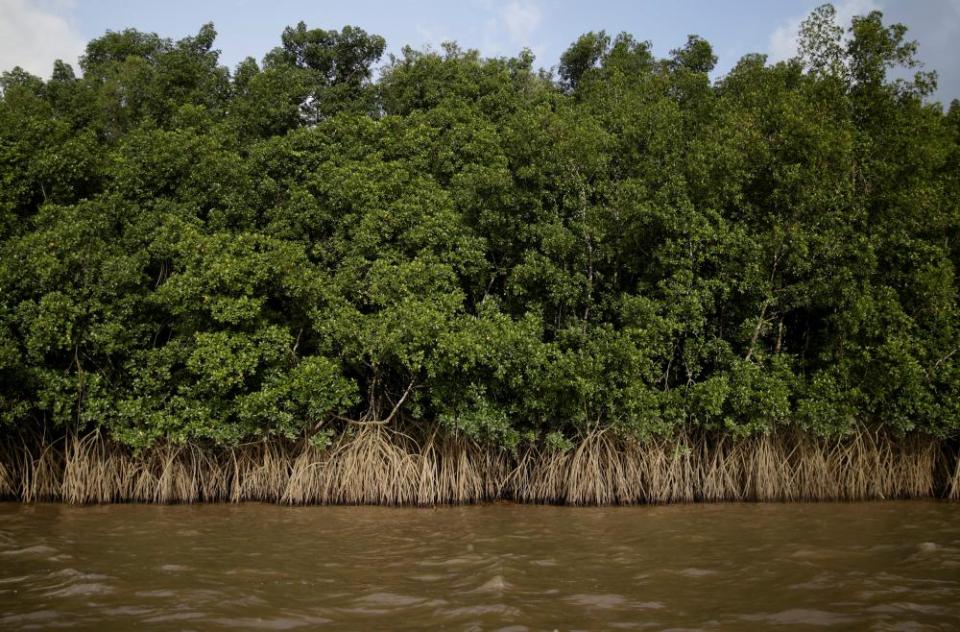Are we running out of water?
default
Water seems the most renewable of all the Earth’s resources. It falls from the sky as rain, it surrounds us in the oceans that cover nearly three-quarters of the planet’s surface, and in the polar ice caps and mountain glaciers. It is the source of life on Earth and quite possibly beyond – the discovery of traces of water on Mars aroused excitement because it was the first indication that life may have existed there.
The problem is that most of the Earth’s water resources are as inaccessible as if they were on Mars, and those that are accessible are unevenly distributed across the planet. Water is hard to transport over long distances, and our needs are growing, both for food and industry. Everything we do requires water, for drinking, washing, growing food, and for industry, construction and manufacturing. With more than 7.5 billion people on the planet, and the population projected to top 10 billion by 2050, the situation is set to grow more urgent.
Currently, 844 million people – about one in nine of the planet’s population – lack access to clean, affordable water within half an hour of their homes, and every year nearly 300,000 children under five die of diarrhoea, linked to dirty water and poor sanitation. Providing water to those who need it is not only vital to human safety and security, but has huge social and economic benefits too. Children lose out on education and adults on work when they are sick from easily preventable diseases. Girls in developing countries are worst off, as they frequently stop going to school at puberty because of a lack of sanitation, and girls and women travelling miles to fetch water or forced to defecate in the open are vulnerable to violence. Providing affordable water saves lives and reduces the burden on healthcare, as well as freeing up economic resources. Every £1 invested in clean water yields at least £4 in economic returns, according to the charity WaterAid.
It would cost just over £21bn a year to 2030, or 0.1% of global GDP, to provide water and hygiene to all those who need it, but the World Bank estimates that the economic benefits would be $60bn a year.
Is climate change making things worse?
Climate change is bringing droughts and heatwaves across the globe, as well as floods and sea level rises. Pollution is growing, both of freshwater supplies and underground aquifers. The depletion of those aquifers can also make the remaining water more saline. Fertilisers leaching nitrates into the supplies can also make water unsuitable for drinking or irrigation.

Cape Town in South Africa provided a stark example of what can happen when water supplies come under threat. For years the city was using more water than it could sustainably supply, and attempts to curb wastage and distribute water supplies more equitably to rich and poor had fallen short of what was needed. By late last year, a crisis point had been reached. The city’s government warned of an imminent day zero, when the water supply would simply run out. Taps would run dry. There would be no more water.
In the event, day zero was narrowly averted, in part by public exhortations to use water more efficiently, rationing, changes in practices such as irrigating by night and reusing “grey” water from washing machines or showers, and eventually a new desalination plant.
Who is most at risk?
The poor are worst hit. Jonathan Farr, senior policy analyst at WaterAid, says: “Competing demands for water means that those who are poorer or marginalised find it more difficult to get water than the rich and powerful.” Many governments and privatised water companies concentrate their provision on wealthy districts, and prioritise agriculture and industry over poorer people, while turning a blind eye to polluters and those who over-extract water from underground sources. Sharing access to water equitably requires good governance, tight regulation, investment and enforcement, all qualities in short supply in some of the world’s poorest and most water-scarce areas.
The number of water-scarce areas is increasing: Cape Town is just the beginning. A ground-breaking new study based on data from the Nasa Grace – Gravity Recovery and Climate Experiment – satellites over a 14-year period discovered 19 hotspots around the world where water resources are being rapidly depleted, with potentially disastrous results. They include areas of California, north-western China, northern and eastern India, and the Middle East. Overall, as climate change scientists had predicted, areas of the world already prone to drought were found to be getting drier, and areas that were already wet getting wetter.
The authors were uncompromising: the results showed that “water is the key environmental issue of the century,” they said.
Who controls water?
There is no global governance system for water. Water is managed at a local level, and often poorly managed. The technology needed to help us use water efficiently and equitably exists, but often is not implemented. “In many instances, proper management of known technology [such as pumps, rainwater collectors, storage cisterns and latrines] rather than new technological solutions is sufficient to ensure users receive adequate services,” says Farr. “We have been solving the problem of getting access to water resources since civilisation began. We know how to do it. We just need to manage it.”
For instance, he notes, in many remote parts of sub-Saharan Africa, “there may be sufficient supplies of groundwater but there has not been enough investment in service delivery and service management to ensure that people can access this water”.
How can freshwater resources be better managed?
Some of the most effective ways of managing water resources are also the simplest. Plugging leaks in pipes is a good example – ageing or poorly maintained infrastructure wastes vast quantities of water. A dripping tap can leak 300 litres a year. In the UK, the Environment Agency has warned of water shortages across the south-east of the country within a few years, if the 3bn litres a day wasted through leaks – enough for the needs of 20 million people – continues.
Water meters for domestic users in developed countries have been controversial, because they can penalise large families which have greater needs. But they provide a readily recognisable gauge to give households more information on their usage, and encourage them not to waste water, particularly as there are readily available technical fixes, from short flush toilets to spray taps and shower heads.
Irrigation has enabled farmers even in arid regions to grow a wider variety of crops. Some methods of irrigation are highly inefficient – in hot countries, water sprayed on crops evaporates before it can reach the roots. An alternative is drip irrigation, a system of pipes that delivers water directly to the roots of each plant, but this is also prone to wastage.
Traditional methods can also be usefully restored in many regions, adds Marc Stutter, of the James Hutton Institute. He notes that in Rajasthan, in India, restoring traditional small dams called johads enabled the periodic rains to be held before they dissipated across the land. The johads led to “the miraculous revitalisation to a green landscape and the surface water returning”.
Advances in sensor technology offer a new way forward. Field sensors, available for as little as $2 a year, can monitor the moisture content in soil, letting farmers know whether irrigation is needed and allowing them to calibrate the irrigation more finely than has previously been possible.
Science is also being brought to bear on the crops themselves. Plant biologists are breeding varieties less prone to drought, through natural selection, and in some cases using genetic modification.
But science and technology can only go so far. As with most water issues, the biggest problem is still governance and equity. Farmers will grow what they can to turn a profit, and many have little alternative than to use scarce groundwater resources. Without strong governance, this can lead to disaster as the depletion has a widespread effect on the whole local community.
What about floods?
Climate change will not only mean more droughts, but also more frequent floods. These can be devastating to agriculture and cities, especially coastal cities already under threat from rising sea levels and stronger storm surges.
The World Bank estimates that the damage to cities from flooding will top $1tn by 2050 if strong action is not taken to equip cities to cope with the consequences.
Making the world more resilient to flooding involves more than just building walls and barriers such as London’s Thames Barrier, though these are still used. Increasingly, planners are finding ways to “make space for water”, and return to natural protections.
For instance, in tropical areas more than a fifth of the mangrove swamps that used to cling to the coastline have been destroyed, cut down to make way for agriculture and aquaculture. Restoring mangroves yields many benefits: they protect inland areas from sea level rises and storm flooding, and provide nurseries for fish, increasing fishing yields. Mangrove restoration projects are now operating in countries from Bangladesh and Indonesia, to Cote d’Ivoire and Suriname.

Flood plains and water meadows also provide natural water storage, with land that acts like a sponge to soak up water, releasing it gradually over time. This can prove unpopular with farmers who want to grow crops on such land, but payments from the public purse can offset the cost to them. In the UK, for instance, projects are under way from Historic England and the National Trust.
Floating houses are another idea that is taking off, from the Netherlands to south-east Asia. The houses are built on floating platforms instead of foundations, but anchored to the sea or river bed, and a wide variety of modern designs are now available. Projects are already under way as far afield as Lagos and London’s Docklands.
What next?
Sustainable development goal six from the UN concerns water, stating that safe water and sanitation should be provided to all by 2030. But WaterAid’s Farr notes that at current rates, some countries will miss the deadline by centuries. World governments will meet at the UN this summer to discuss the progress.
According to James Famiglietti, co-author of the Nasa Grace study, some of the areas most vulnerable are “already past sustainability tipping points” as their major aquifers are being rapidly depleted, in particular the Arabian peninsula, the north China plain, the Ogallala aquifer under the great plains of the US, the Guarani aquifer in south America, the north-west Sahara aquifer system and others. “When those aquifers can no longer supply water – and some, like the southern half of the Ogallala, may run out by 2050 – where will we be producing our food and where will the water come from?” he asks.
Further reading
Elixir: A History of Water and Humankind by Brian Fagan, emeritus professor of anthropology, University of California Santa Barbara
Blue Revolution: Unmaking America’s Water Crisis by Cynthia Barnett
Virtual Water by Tony Allan, emeritus professor of geography at King’s College London
Sustainable Development Goal 6, water and sanitation, the UN, and WaterAid reports on progress
World Health Organisation reports on water and sanitation (WASH)
WHO and Unicef joint 2017 update report on water and sanitation
TED talks on sanitation

 Yahoo News
Yahoo News 
